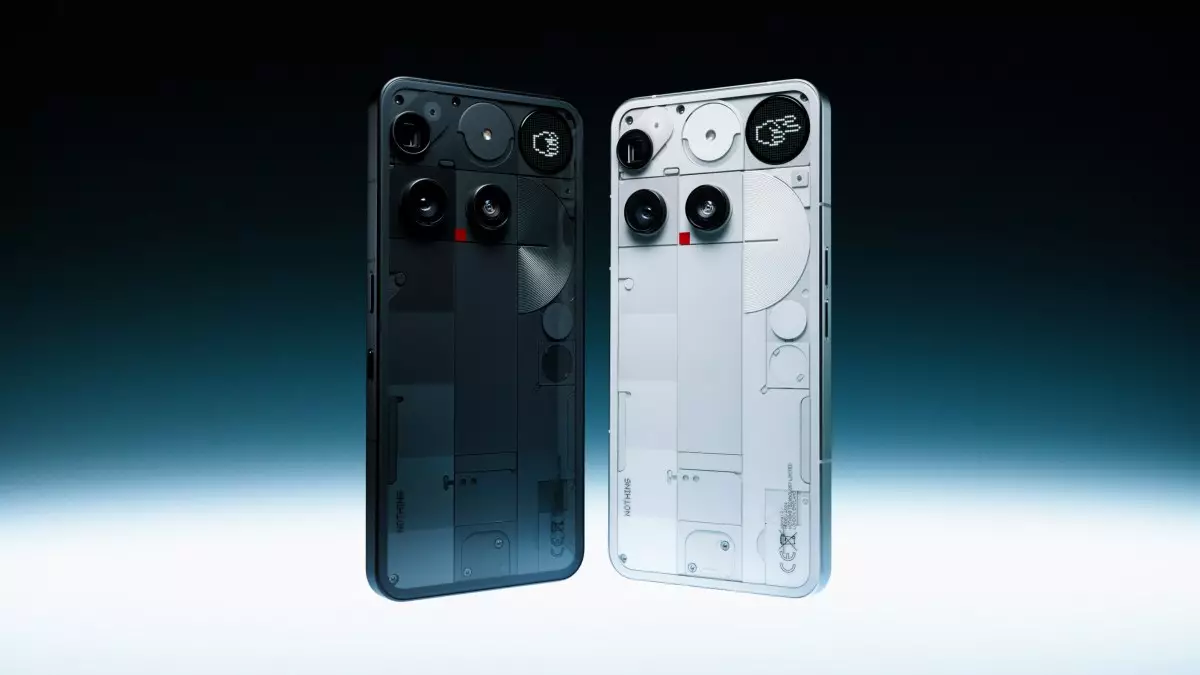In an industry saturated with similar-looking devices, the Nothing Phone (3) dares to stand out by challenging conventional design paradigms and integrating forward-thinking technology. After a two-year hiatus, Nothing returns with a device that doesn’t just aim to compete but to disrupt the current smartphone landscape. Its fresh design choices, combined with AI-driven tools and innovative notifications, position it as a compelling alternative for tech enthusiasts eager for originality and performance.
What truly sets the Phone (3) apart is its commitment to aesthetic daringness. Breaking away from the typical rectangular, aligned camera arrays, Nothing employs a bold, staggered camera layout that could almost be considered either the device’s signature look or its most controversial feature – depending on your perspective. For those with an obsession for symmetry, the unaligned placement might provoke irritation, but to others, it symbolizes the brand’s commitment to individuality. This deviation illustrates an important shift towards embracing imperfections and embracing creative freedom in device design.
The real star of the show is the device’s back panel. While previous models relied on LED indicators for notifications, Nothing transformed this feature with the Glyph Matrix—a mini LED screen that can display elaborate patterns, real-time alerts, and even mini-games. This small but powerful screen allows for a level of personalization and interactivity that is rarely seen on smartphones. It transforms the back of a device from merely a design element into a functional canvas, blending form with utility. The inclusion of mini-apps like “Spin the Bottle” and “Rock, Paper, Scissors” signals Nothing’s playful approach to hardware, inviting users to engage with their phones in novel ways.
Powerful Hardware Paired with AI Capabilities
Beneath its striking exterior, the Phone (3) boasts specifications that are competitive with flagship Android devices, but it’s the software and AI features that truly elevate its appeal. The device is equipped with a 6.67-inch AMOLED display with 1.5K resolution protected by Gorilla Glass 7i, ensuring vibrant visuals and resilient durability. Powered by the Snapdragon 8 Gen 4 chip, built on a cutting-edge 4nm process, performance is expected to be smooth and efficient—ideal for power users and multitaskers alike.
However, hardware alone won’t make the device revolutionary; it’s the thoughtful integration of AI tools that makes the Phone (3) noteworthy. The Essential Space app, which debuted on a previous model, has been upgraded to include AI functionalities such as recording meetings and generating transcriptions with summaries. While this is a handy feature, it highlights a deeper challenge: security and accessibility. No web interface currently exists to access these transcriptions, limiting the scope of its usefulness outside the device. Still, the emphasis on AI-driven organization suggests Nothing’s vision for a smart, intuitive phone that adapts to user needs.
Complementing this is Essential Search—an AI-powered search function resembling the iPhone’s Spotlight but infused with natural language processing. This allows users to find settings, files, or photos through keywords or even conversational queries. It demonstrates an understanding that modern users expect their smartphones to be more intelligent and responsive. By integrating ChatGPT-like functions, Nothing pushes for a seamless blend of assistant and device that aims to anticipate users’ needs rather than merely react.
Design, Pricing, and Market Positioning
At a price point starting at $799 for the 256GB model and $899 for the 512GB version, the Phone (3) positions itself within a competitive segment dominated by brands like Samsung and Apple. It offers a compelling value proposition—not just for its hardware but for its commitment to extended software support, promising five years of updates and seven years of security patches. In a market where update longevity is often limited, this approach appeals to consumers who value longevity and sustained performance.
The device’s launch strategy signals an assertive push into the U.S. market, widely available through the company’s website and Amazon, marking a significant step for Nothing as it attempts to bolster its presence against established giants. Preorders commence in early July, with general availability shortly after, indicating confidence in their product’s reception. Unlike its previous devices, which were more niche, the Phone (3) aims for mass-market appeal—balancing innovative design with mainstream hardware standards.
However, critics might question whether this bold design will resonate widely or alienate potential users who prefer traditional aesthetics. Additionally, the somewhat gimmicky nature of features like Glyph and mini-apps could be perceived as superficial if they don’t mature into genuinely useful tools. Still, for those craving a different kind of smartphone—one that defies conformity—Nothing’s latest offering may just be the breath of fresh air the industry needs.
Final Thoughts: A Bold Step Toward Personalization and Creativity
The Nothing Phone (3) represents more than just a new device; it’s a statement. It dares to challenge established norms, inviting users to see their smartphones as expressive and personal platforms rather than bland, functional tools. Its daring design choices, combined with integrated AI features, demonstrate a philosophy rooted in creativity and innovation. Whether or not it achieves mainstream success, it undeniably pushes the boundaries of what a smartphone can be, emphasizing that technology and design can coexist with personality and artistry.
As the industry continues to evolve, one thing is clear: the era of boring, homogeneous devices may be coming to an end. With a focus on individuality, interaction, and extended support, Nothing’s latest flagship positions itself as a beacon for those seeking a device that’s truly different—both in appearance and in purpose.

